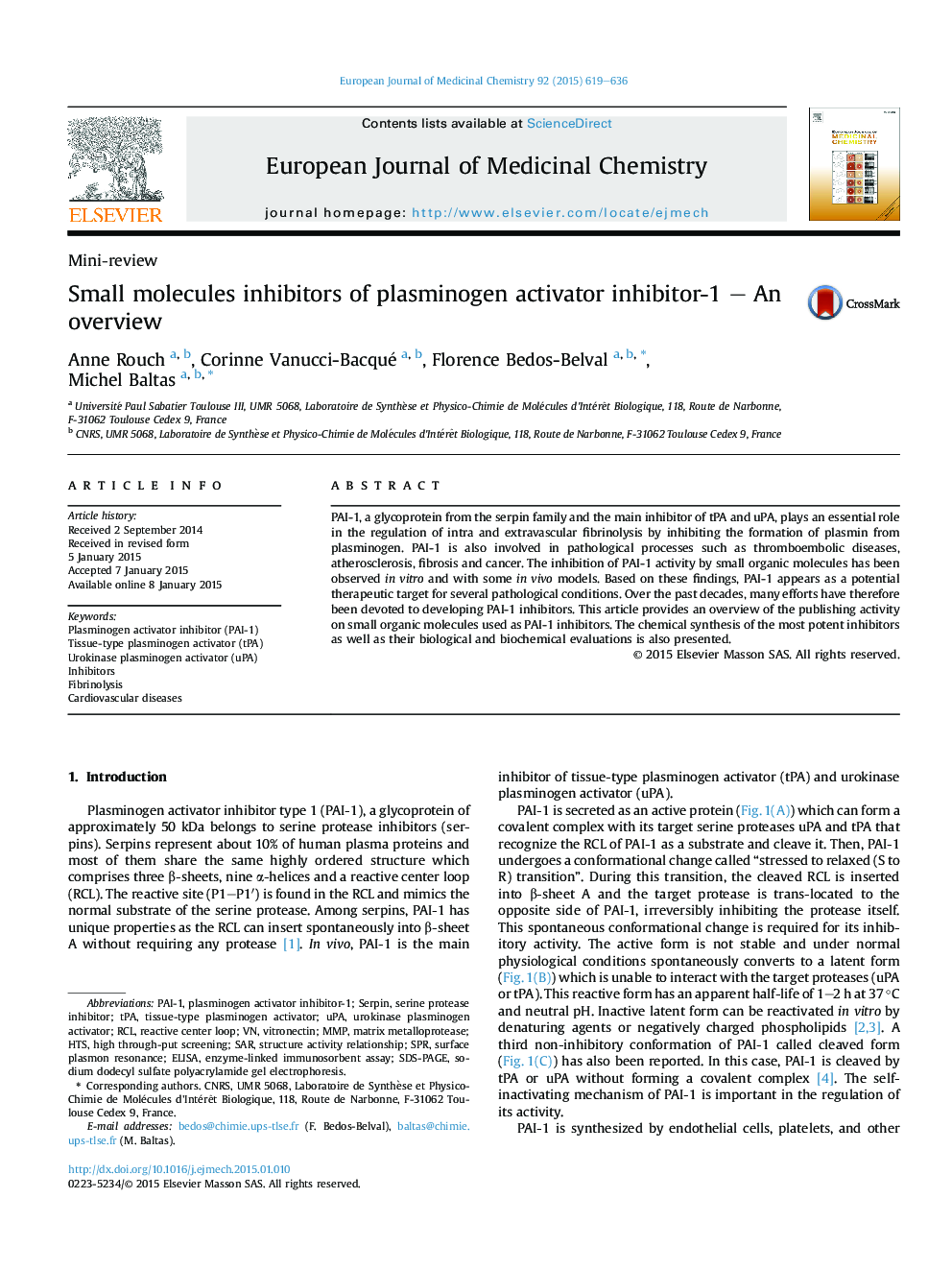| Article ID | Journal | Published Year | Pages | File Type |
|---|---|---|---|---|
| 1393974 | European Journal of Medicinal Chemistry | 2015 | 18 Pages |
•PAI-1 protein regulates fibrinolysis and is involved in many pathological processes.•This review focuses on natural and synthetic PAI-1 inhibitors.•Synthetic strategies followed for the synthesis of PAI-1 inhibitors.•IC50 of the most active analog of series of derivatives.
PAI-1, a glycoprotein from the serpin family and the main inhibitor of tPA and uPA, plays an essential role in the regulation of intra and extravascular fibrinolysis by inhibiting the formation of plasmin from plasminogen. PAI-1 is also involved in pathological processes such as thromboembolic diseases, atherosclerosis, fibrosis and cancer. The inhibition of PAI-1 activity by small organic molecules has been observed in vitro and with some in vivo models. Based on these findings, PAI-1 appears as a potential therapeutic target for several pathological conditions. Over the past decades, many efforts have therefore been devoted to developing PAI-1 inhibitors. This article provides an overview of the publishing activity on small organic molecules used as PAI-1 inhibitors. The chemical synthesis of the most potent inhibitors as well as their biological and biochemical evaluations is also presented.
Graphical abstractFigure optionsDownload full-size imageDownload as PowerPoint slide
